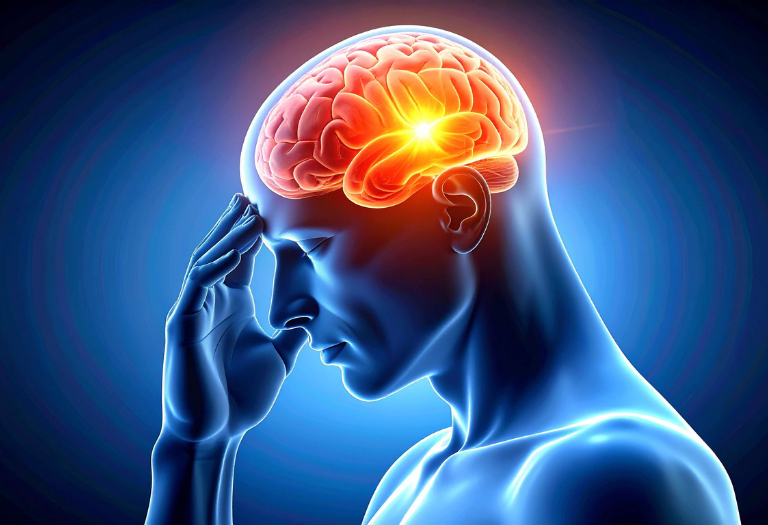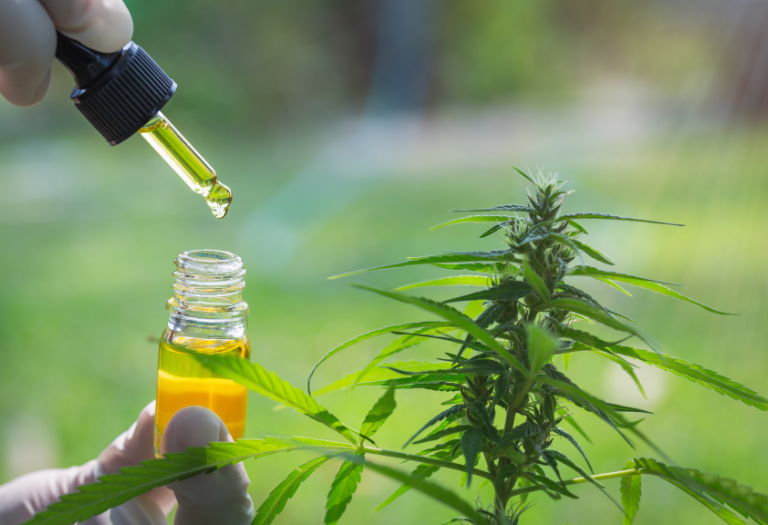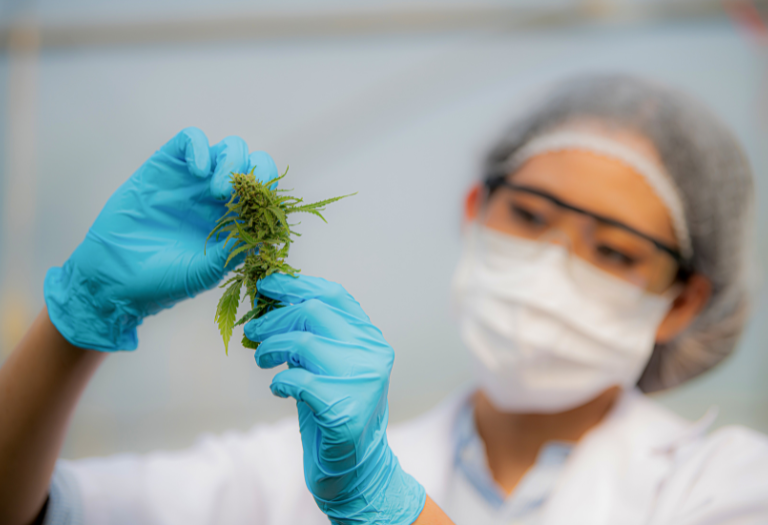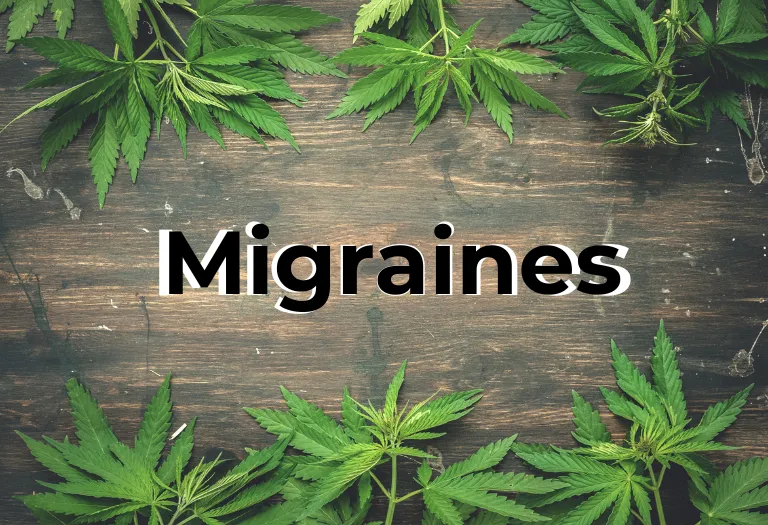You know the feeling — that dull pressure building behind your eyes or the sudden, pulsing pain that makes every sound and light unbearable. For some, these headaches strike occasionally; for others, they arrive like clockwork, stealing focus, energy, and even entire days. When medications lose their edge or side effects become another problem to manage, relief can feel out of reach.
That’s why more people are turning to medical cannabis. Emerging research suggests that cannabinoids like THC and CBD may help ease pain, calm inflammation, and reduce the frequency of headaches and migraines. Could this natural approach offer the relief that many have been searching for?
Here’s a closer look at how medical cannabis may help manage headaches—the science, the benefits, the risks, and what to consider before getting started.
That’s why more people are turning to medical cannabis. Emerging research suggests that cannabinoids like THC and CBD may help ease pain, calm inflammation, and reduce the frequency of headaches and migraines. Could this natural approach offer the relief that many have been searching for?
Here’s a closer look at how medical cannabis may help manage headaches—the science, the benefits, the risks, and what to consider before getting started.
Understanding Headaches
Headaches are among the most common health complaints, affecting people of all ages and lifestyles. While often dismissed as minor discomfort, they can range from a dull ache to intense, throbbing pain that interferes with daily activities, focus, and sleep.
There are several types of headaches, each with distinct causes and symptoms:
There are several types of headaches, each with distinct causes and symptoms:

1. Tension Headaches
These are the most common type, often caused by stress, anxiety, or muscle strain. They usually create a steady, pressing pain on both sides of the head or around the temples.
2. Migraines
Migraines go beyond ordinary headaches. They can cause severe, pulsating pain—typically on one side of the head—accompanied by nausea, vomiting, and sensitivity to light or sound. For some, these attacks last for hours or even days, severely impacting quality of life.
3. Cluster Headaches
These occur in cycles or “clusters,” producing sharp, burning pain around one eye or temple. Episodes can strike suddenly and are often described as some of the most painful types of headaches.
4. Sinus Headaches
Triggered by sinus infections or allergies, these headaches create deep, constant pressure in the forehead, cheeks, or nose area and may worsen with sudden head movement.
While occasional headaches may result from stress, fatigue, or dehydration, frequent or severe episodes can point to deeper health issues that deserve proper attention.
How Medical Cannabis Helps with Headaches
Medical cannabis may offer relief for headaches and migraines by targeting the body’s endocannabinoid system (ECS) — a network of receptors that helps regulate pain, inflammation, mood, and blood vessel function. When the ECS is out of balance, pain signals can become amplified, leading to chronic discomfort and migraine attacks.
THC (tetrahydrocannabinol) and CBD (cannabidiol), the two main cannabinoids in cannabis, interact with ECS receptors to help restore that balance.
- THC binds to CB1 receptors in the brain, altering pain perception and reducing the intensity of headache pain. It can also help relax blood vessels and muscles, both of which may ease migraine-related tension.
- CBD doesn’t produce a “high,” but it supports the ECS by reducing inflammation, calming nerve activity, and promoting relaxation — all key factors in headache management.
Benefits of Medical Cannabis for Headaches
1. Pain and Inflammation Relief
Cannabinoids may reduce the release of inflammatory chemicals and alter pain signaling in the brain. For those with migraines or tension headaches, this can translate into shorter and less intense episodes.
2. Reduced Frequency of Attacks
Some studies have shown that consistent, monitored use of medical cannabis can help decrease how often migraine and headache attacks occur, offering better long-term control for chronic sufferers.
3. Relief from Nausea and Sensitivity
Migraines often bring nausea, vomiting, and sensitivity to light or sound. Both THC and CBD have been found to ease nausea and promote relaxation, helping patients recover faster during an episode.
4. Improved Sleep and Recovery
Sleep disruption is a common trigger and symptom of headaches. Medical cannabis, especially strains high in CBD or balanced THC-CBD ratios, may promote better sleep quality and allow the body to recover more effectively between episodes.
5. Support for Mental and Emotional Well-being
Chronic headaches can lead to stress, anxiety, or depression. CBD’s calming effects may help stabilize mood, reduce stress levels, and support emotional balance—factors that often influence headache severity.
While more clinical research is still needed, evidence and patient experiences suggest that medical cannabis can play a valuable role in easing headache symptoms, improving daily function, and enhancing overall quality of life when used under professional supervision.

Consumption Methods of Cannabis for Headaches
Choosing the right way to use medical cannabis is key to consistent headache relief. Each form of use offers different onset times, durations, and levels of control, so guidance from a qualified specialist is strongly recommended to find what works best.
1. Helps You Fall Asleep Faster
THC has sedative effects that can shorten the time it takes to fall asleep, particularly for those with stress-related insomnia.
2. Improves Sleep Quality
Cannabis may increase time spent in deep sleep (NREM stages)—the most restorative phase—helping you wake up feeling more refreshed.
3. Reduces Nighttime Awakenings
Many users report fewer disturbances during the night, especially when using balanced THC-CBD products that calm both body and mind.
4. Eases Pain and Discomfort
For those with chronic pain, cannabis can provide relief, allowing more consistent, uninterrupted rest.
5. Lowers Anxiety and Promotes Relaxation
CBD’s anti-anxiety properties help quiet racing thoughts, creating the mental calm necessary for better sleep.
Together, these effects make medical cannabis a potential alternative for people who struggle to find lasting relief with conventional sleep medications.
Consumption Methods of Cannabis for Headaches
Choosing the right way to use medical cannabis is key to consistent headache relief. Each form of use offers different onset times, durations, and levels of control, so guidance from a qualified specialist is strongly recommended to find what works best.
1. Tinctures and Oils (Sublingual Use)
Tinctures are liquid cannabis extracts placed under the tongue for fast absorption and precise dosing. Effects begin within 15–30 minutes, making them ideal for those who prefer to avoid inhalation.
2. Edibles and Capsules
Edibles and capsules provide longer-lasting relief—typically 4–6 hours or more—but take 30 minutes to 2 hours to take effect. They’re better suited for ongoing symptom control rather than immediate relief.
3. Vaping and Inhalation
Vaporizing delivers near-instant relief by sending cannabinoids directly into the bloodstream through the lungs. Many find it effective at the first sign of a migraine, but it’s best to use regulated devices and avoid smoking raw cannabis to prevent lung irritation.
4. Topicals and Balms
Applied to the skin, these products help ease muscle tension in the neck, temples, or shoulders—common headache triggers—though they don’t treat internal pain.
5. Transdermal Patches
Patches release cannabinoids steadily through the skin for consistent, long-term relief without repeated dosing. Discreet and easy to use, they’re useful for managing chronic headaches and maintaining steady comfort throughout the day.
When starting any cannabis-based treatment, the golden rule is to “start low and go slow.” Begin with small doses, track your body’s response, and adjust only under medical supervision.
When starting any cannabis-based treatment, the golden rule is to “start low and go slow.” Begin with small doses, track your body’s response, and adjust only under medical supervision.
Don’t risk your health on guesswork
Book a consultation with our medical
marijuana experts today!
marijuana experts today!
Risks and Safety Considerations
While medical cannabis can help manage headaches, it’s important to understand its potential side effects and safety factors before using it as part of a treatment plan.
Common side effects can include
- Dizziness or lightheadedness, especially with higher THC doses
- Dry mouth and fatigue
- Changes in appetite or mild nausea
- Anxiety, confusion, or rapid heart rate with strong THC strains
Long-Term Concerns
- Frequent use of THC-rich products may cause tolerance or dependence, reducing effectiveness over time
- Withdrawal symptoms (irritability, restlessness, sleep changes) may occur if stopped suddenly
Medication Interactions
- CBD and THC can alter how the liver metabolizes certain drugs
- May affect triptans, beta-blockers, and antidepressants, impacting their effectiveness or side effects
Used thoughtfully and with proper guidance, medical cannabis can offer meaningful headache relief while keeping side effects to a minimum.

Legal Aspects of Medical Cannabis Use
The legality of medical cannabis in the United States varies widely, making it essential for patients to understand both state and federal regulations before beginning treatment.
Medical Use by State
Federal Law Classification
The DEA still classifies marijuana as a Schedule I substance under 21 CFR §1308.11, meaning it’s federally illegal with no accepted medical use.
Crossing State Lines
Per California’s DCC, it’s illegal to transport cannabis across state lines, regardless of state-level legality. Federal law applies.
Workplace & Travel Restrictions
Safe Access Only via Licensed Dispensaries
Only licensed dispensaries provide lab-tested, regulated cannabis. California’s DCC warns that unlicensed sources can contain harmful contaminants or false labeling.
Understanding your legal rights and responsibilities helps ensure safe, compliant, and stress-free access to treatment.

When the Noise Finally Fades
For those who live with constant headaches or migraines, the world can feel like it’s always humming — too bright, too loud, too much. Medical cannabis doesn’t promise to silence that noise entirely, but for many, it helps turn the volume down.
By easing pain, calming inflammation, and promoting balance within the body, cannabis offers a gentler way forward — one rooted in relief rather than resistance. It’s not about escaping the pain, but reclaiming the moments it once stole. With thoughtful use and medical guidance, clearer, quieter days may finally be within reach.
By easing pain, calming inflammation, and promoting balance within the body, cannabis offers a gentler way forward — one rooted in relief rather than resistance. It’s not about escaping the pain, but reclaiming the moments it once stole. With thoughtful use and medical guidance, clearer, quieter days may finally be within reach.

FAQs
1. Can medical cannabis help with headaches and migraines?
Yes, it may reduce headache frequency, severity, and nausea by regulating pain and inflammation.
2. What type of cannabis works best for headache relief?
Balanced THC-CBD products often work best for managing pain, relaxation, and inflammation.
3. How quickly does cannabis work for headaches?
Vaping acts within minutes; tinctures within 30 minutes; edibles take longer but last longer.
4. Is CBD alone effective for migraines?
CBD offers mild relief but works better when combined with low amounts of THC.
5. Are there side effects of using cannabis for headaches?
Possible effects include drowsiness, dizziness, dry mouth, or temporary memory issues.
6. Can I use medical cannabis with migraine medications?
Consult your doctor first—cannabis can interact with triptans or beta-blockers.
7. Is medical cannabis legal for migraine treatment?
Legality varies by state; check your local medical marijuana regulations.
8. How should I start using cannabis safely?
Begin with a low dose, increase gradually, and follow medical guidance.
Find Relief That Finally Makes Sense
If headaches or migraines keep returning, relief may start with a medical marijuana card. At Marijuana Specialist Near Me, our certified providers make it simple to get approved and begin safe, effective cannabis treatment.
Don’t wait for the next flare-up — start your medical marijuana card application today and take control of your pain with expert care.

Ready to find the
perfect strain for your needs?
Navigating the complexities of medical marijuana laws can be tricky, but with the right information, you can protect your privacy and your rights as a medical cannabis cardholder. At Marijuana Specialist Near Me, we make the process of obtaining a medical marijuana card straightforward, with online consultations and guidance through the legal landscape, ensuring you’re well informed about how your card can be used without compromising your privacy.


